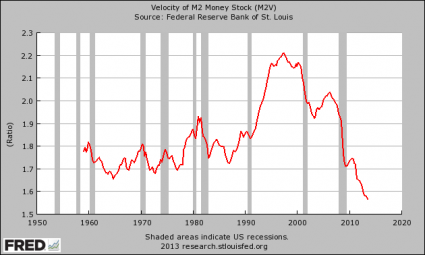Laura Gottesdiener
You can hardly turn on the television or open a newspaper without
hearing about the nation’s impressive, much celebrated housing recovery.
Home prices are rising! New construction has started! The crisis is
over! Yet beneath the fanfare, a whole new get-rich-quick scheme is
brewing.
Over the last year and a half, Wall Street hedge funds and private
equity firms have quietly amassed an unprecedented rental empire,
snapping up Queen Anne Victorians in Atlanta, brick-faced bungalows in
Chicago, Spanish revivals in Phoenix. In total, these deep-pocketed
investors have bought more than
200,000 cheap, mostly foreclosed houses in cities hardest hit by the economic meltdown.
Wall Street’s foreclosure crisis, which began in late 2007 and forced
more than 10 million people
from their homes, has created a paradoxical problem. Millions of
evicted Americans need a safe place to live, even as millions of vacant,
bank-owned houses are blighting neighborhoods and
spurring a rise in crime.
Lucky for us, Wall Street has devised a solution: It’s going to rent
these foreclosed houses back to us. In the process, it’s devised a new
form of securitization that could cause this whole plan to blow up —
again.
Since the buying frenzy began, no company has picked up more houses
than the Blackstone Group, the largest private equity firm in the world.
Using a subsidiary company, Invitation Homes, Blackstone has grabbed
houses at foreclosure auctions, through local brokers, and in bulk
purchases directly from banks the same way a regular person might stock
up on toilet paper from Costco.
In one move, it bought
1,400 houses in Atlanta in a single day. As of November, Blackstone had spent
$7.5 billion to buy 40,000 mostly foreclosed houses across the country. That’s a spending rate of
$100 million a week since October 2012. It recently
announced plans to take the business international, beginning in foreclosure-ravaged Spain.
Few outside the finance industry have heard of Blackstone. Yet today,
it’s the largest owner of single-family rental homes in the nation —
and of a whole lot of other things, too. It owns part or all of the
Hilton Hotel chain, Southern Cross Healthcare, Houghton Mifflin
publishing house, the Weather Channel, Sea World, the arts and crafts
chain Michael’s, Orangina, and dozens of other companies.
Blackstone manages
more than $210 billion in assets, according to its 2012 Securities and Exchange Commission annual filing. It’s also a public company with a
list of institutional owners
that reads like a who’s who of companies recently implicated in
lawsuits over the mortgage crisis, including Morgan Stanley, Citigroup,
Deutsche Bank, UBS, Bank of
America,
Goldman Sachs, and of course JP Morgan Chase, which just settled a
lawsuit with the Department of Justice over its risky and often illegal
mortgage practices, agreeing to pay an unprecedented $13 billion fine.
In other words, if Blackstone makes money by capitalizing on the
housing crisis, all these other Wall Street banks — generally regarded
as the main culprits in creating the conditions that led to the
foreclosure crisis in the first place — make money too.
An All-Cash Goliath
In neighborhoods across the country, many residents didn’t have to
know what Blackstone was to realize that things were going seriously
wrong.
Last year, Mark Alston, a real estate broker in Los Angeles, began
noticing something strange happening. Home prices were rising. And they
were rising fast — up 20% between October 2012 and the same month this
year. In a normal market, rising home prices would mean increased demand
from homebuyers. But here was the unnerving thing: the homeownership
rate
was dropping, the first sign for Alston that the market was somehow out of whack.
The second sign was the buyers themselves.
Click here to see a larger version
About 5% of Blackstone’s properties, approximately 2,000 houses,
are located in the Charlotte metro area. Of those, just under 1,000
(pictured above) are in Mecklenberg County, the city’s center. (Map by
Anthony Giancatarino, research by Symone New.)
“I went two years without selling to a black family, and that wasn’t
for lack of trying,” says Alston, whose business is concentrated in
inner-city neighborhoods where the majority of residents are African
American and Hispanic. Instead, all his buyers — every last one of them —
were besuited businessmen. And weirder yet, they were all paying in
cash.
Between 2005 and 2009, the mortgage crisis, fueled by
racially discriminatorylending practices,
destroyed
53% of African American wealth and 66% of Hispanic wealth, figures that
stagger the imagination. As a result, it’s safe to say that few blacks
or Hispanics today are buying homes outright, in cash. Blackstone, on
the other hand, doesn’t have a problem fronting the money, given its
$3.6 billion credit line
arranged by Deutsche Bank. This money has allowed it to outbid families
who have to secure traditional financing. It’s also paved the way for
the company to purchase a lot of homes very quickly, shocking local
markets and driving prices up in a way that pushes even more families
out of the game.
“You can’t compete with a company that’s betting on speculative
future value when they’re playing with cash,” says Alston. “It’s almost
like they planned this.”
In hindsight, it’s clear that the Great Recession fueled a terrific
wealth and asset transfer away from ordinary Americans and to financial
institutions. During that crisis, Americans lost
trillions of dollars
of household wealth when housing prices crashed, while banks seized
about five million homes. But what’s just beginning to emerge is how, as
in the recession years, the recovery itself continues to drive the
process of transferring wealth and power from the bottom to the top.
From 2009-2012, the top
1% of Americans captured
95% of income gains.
Now, as the housing market rebounds, billions of dollars in recovered
housing wealth are flowing straight to Wall Street instead of to
families and communities. Since spring 2012, just at the time when
Blackstone began buying foreclosed homes in bulk, an estimated $88
billion of housing wealth accumulation has gone straight to banks or
institutional investors as a result of their residential property
holdings, according to an analysis by TomDispatch. And it’s a number
that’s likely to just keep growing.
“Institutional investors are siphoning the wealth and the ability for
wealth accumulation out of underserved communities,” says Henry Wade,
founder of the Arizona Association of Real Estate Brokers.
But buying homes cheap and then waiting for them to appreciate in
value isn’t the only way Blackstone is making money on this deal. It
wants your rental payment, too.
Securitizing Rentals
Wall Street’s rental empire is entirely new. The single-family rental
industry used to be the bailiwick of small-time mom-and-pop operations.
But what makes this moment unprecedented is the financial alchemy that
Blackstone added. In November, after many months of hype, Blackstone
released history’s first
rated bond backed by securitized rental payments. And once investors
tripped over themselves in a rush to get it, Blackstone’s competitors
announced that they, too, would develop similar securities as soon as possible.
Depending on whom you ask, the idea of bundling rental payments and
selling them off to investors is either a natural evolution of the
finance industry or a fire-breathing chimera.
“This is a new frontier,” comments Ted Weinstein, a consultant in the
real-estate-owned homes industry for 30 years. “It’s something I never
really would have dreamt of.”
However, to anyone who went through the 2008 mortgage-backed-security crisis, this new territory will sound strangely familiar.
“It’s just like a residential mortgage-backed security,” said one
hedge-fund investor whose company does business with Blackstone. When
asked why the public should expect these securities to be safe, given
the fact that risky mortgage-backed securities caused the 2008 collapse,
he responded, “Trust me.”
For Blackstone, at least, the logic is simple. The company wants
money upfront to purchase more cheap, foreclosed homes before prices
rise. So it’s joined forces with JP Morgan, Credit Suisse, and Deutsche
Bank to bundle the rental payments of 3,207 single-family houses and
sell this bond to investors with mortgages on the underlying houses
offered as collateral. This is, of course, just a test case for what
could become a whole new industry of rental-backed securities.
Many major Wall Street banks are involved in the deal, according to a
copy of the private pitch documents Blackstone sent to potential
investors on October 31st, which was reviewed by TomDispatch. Deutsche
Bank, JP Morgan, and Credit Suisse are helping market the bond. Wells
Fargo is the certificate administrator. Midland Loan Services, a
subsidiary of PNC Bank, is the loan servicer. (By the way, Deutsche
Bank, JP Morgan Chase, Wells Fargo, and PNC Bank are all members of
another clique:
the list of banks foreclosing on the most families in 2013.)
According to interviews with economists, industry insiders, and
housing activists, people are more or less holding their collective
breath, hoping that what looks like a duck, swims like a duck, and
quacks like a duck won’t crash the economy the same way the last flock
of ducks did.
“You kind of just hope they know what they’re doing,” says Dean
Baker, an economist with the Center for Economic and Policy Research.
“That they have provisions for turnover and vacancies. But have they
done that? Have they taken the appropriate care? I certainly wouldn’t
count on it.” The cash flow analysis in the documents sent to investors
assumes that 95% of these homes will be rented at all times, at an
average monthly rent of $1,312. It’s an occupancy rate that real estate
professionals describe as ambitious.
There’s one significant way, however, in which this kind of security
differs from its mortgage-backed counterpart. When banks repossess
mortgaged homes as collateral, there is at least the assumption (
often incorrect
due to botched or falsified paperwork from the banks) that the
homeowner has, indeed, defaulted on her mortgage. In this case, however,
if a single home-rental bond blows up, thousands of families could be
evicted, whether or not they ever missed a single rental payment.
“We could well end up in that situation where you get a lot of people
getting evicted… not because the tenants have fallen behind but because
the
landlordshave fallen behind,” says Baker.
Bugs in Blackstone’s Housing Dreams
Whether these new securities are safe may boil down to the simple
question of whether Blackstone proves to be a good property manager.
Decent management practices will ensure high occupancy rates,
predictable turnover, and increased investor confidence. Bad management
will create complaints, investigations, and vacancies, all of which will
increase the likelihood that Blackstone won’t have the cash flow to pay
investors back.
If you ask CaDonna Porter, a tenant in one of Blackstone’s Invitation
Homes properties in a suburb outside Atlanta, property management is
exactly the skill that Blackstone lacks. “If I could shorten my lease — I
signed a two-year lease — I definitely would,” says Porter.
The cockroaches and fat
water
bugs were the first problem in the Invitation Homes rental that she and
her children moved into in September. Porter repeatedly filed online
maintenance requests that were canceled without anyone coming to
investigate the infestation. She called the company’s repairs hotline.
No one answered.
The second problem arrived in an email with the subject line marked
“URGENT.” Invitation Homes had failed to withdraw part of Porter’s
November payment from her bank account, prompting the company to demand
that she deliver the remaining payment in person, via certified funds,
by five p.m. the following day or incur “the additional legal fee of
$200 and dispossessory,” according to email correspondences reviewed by
TomDispatch.
Porter took off from work to deliver the money order in person, only
to receive an email saying that the payment had been rejected because it
didn’t include the $200 late fee and an additional $75 insufficient
funds fee. What followed were a maddening string of emails that recall
the
fraught and often fraudulent
interactions between homeowners and mortgage-servicing companies.
Invitation Homes repeatedly threatened to file for eviction unless
Porter paid various penalty fees. She repeatedly asked the company to
simply accept her month’s payment and leave her alone.
“I felt really harassed. I felt it was very unjust,” says Porter. She
ultimately wrote that she would seek legal counsel, which caused
Invitation Homes to immediately agree to accept the payment as “a
one-time courtesy.”
Porter is still frustrated by the experience — and by the continued
presence of the cockroaches. (“I put in another request today about the
bugs, which will probably be canceled again.”)
A recent
Huffington Post investigation and
dozens of
online reviews
written by Invitation Homes tenants echo Porter’s frustrations. Many
said maintenance requests went unanswered, while others complained that
their spiffed-up houses actually had underlying structural issues.
There’s also at least one documented case of Blackstone moving into
murkier legal territory. This fall, the Orlando, Florida, branch of
Invitation Homes appeared to mail forged eviction notices to a homeowner
named Francisco Molina,
according to the
Orlando Sentinel.
Delivered in letter-sized manila envelopes, the fake notices claimed
that an eviction had been filed against Molina in court, although the
city confirmed otherwise. The kicker is that Invitation Homes didn’t
even have the right to evict Molina, legally or otherwise. Blackstone’s
purchase of the house had been reversed months earlier, but the company
had lost track of that information.
The Great Recession of 2016?
These anecdotal stories about Invitation Homes being quick to evict
tenants may prove to be the trend rather than the exception, given
Blackstone’s underlying business model. Securitizing rental payments
creates an intense pressure on the company to ensure that the monthly
checks keep flowing. For renters, that may mean you either pay on the
first of the month every month, or you’re out.
Although Blackstone has issued only one rental-payment security so
far, it already seems to be putting this strict protocol into place. In
Charlotte, North Carolina, for example, the company has filed eviction
proceedings against a full
10% of its renters, according to a report by the
Charlotte Observer.
Click here to see a larger version
 About 9% of Blackstone’s properties, approximately 3,600 houses, are
located in the Phoenix metro area. Most are in low- to middle-income
neighborhoods. (Map by Anthony Giancatarino, research by Jose Taveras.)
About 9% of Blackstone’s properties, approximately 3,600 houses, are
located in the Phoenix metro area. Most are in low- to middle-income
neighborhoods. (Map by Anthony Giancatarino, research by Jose Taveras.)
Forty thousand homes add up to only a small percentage of the total
national housing stock. Yet in the cities Blackstone has targeted most
aggressively, the concentration of its properties is staggering. In
Phoenix, Arizona, some neighborhoods have at least one, if not two or
three, Blackstone-owned homes on just about every block.
This inundation has some concerned that the private equity giant,
perhaps in conjunction with other institutional investors, will exercise
undue influence over regional markets, pushing up rental prices because
of a lack of competition. The biggest concern among many ordinary
Americans, however, should be that, not too many years from now, this
whole rental empire and its hot new class of securities might fail,
sending the economy into an all-too-familiar tailspin.
“You’re allowing Wall Street to control a significant sector of
single-family housing,” said Michael Donley, a resident of Chicago who
has been investigating Blackstone’s rapidly expanding presence in his
neighborhood. “But is it sustainable?” he wondered. “It could all
collapse in 2016, and you’ll be worse off than in 2008.”
Laura Gottesdiener is a journalist and the author of A Dream Foreclosed: Black America and the Fight for a Place to Call Home,
published in August by Zuccotti Park Press. She is an editor for Waging Nonviolence and has written for Rolling Stone
, Ms., Playboy
, the Huffington Post,
and other publications. She lived and worked in the People’s Kitchen
during the occupation of Zuccotti Park. This is her second TomDispatch piece.
[
Note: Special thanks to Symone New and Jose Taveras
for conducting the difficult research to locate Blackstone-owned
properties. Special thanks also to Anthony Giancatarino for turning this
data into beautiful maps.]
With permission
TomDispatch

 Amidst
the difficulties of rolling out the private insurance company model of
the Affordable Healthcare Act (ACA), it has almost gone unnoticed by the
national corporate media that one state is going ahead with plans for a
single-payer non-profit system to be implemented by 2017.
Amidst
the difficulties of rolling out the private insurance company model of
the Affordable Healthcare Act (ACA), it has almost gone unnoticed by the
national corporate media that one state is going ahead with plans for a
single-payer non-profit system to be implemented by 2017.





